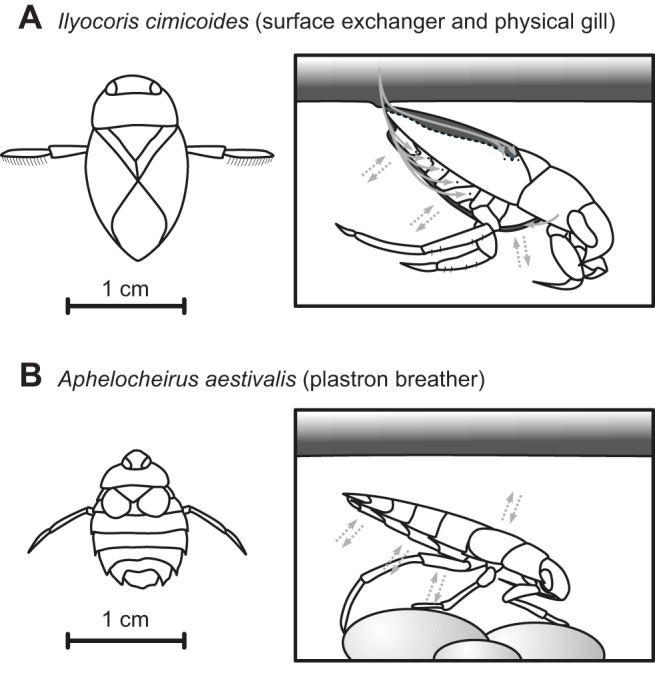Fig. 1.

Overview of gas exchange in the bimodal breather Ilyocoris cimicoides and the plastron breather Aphelocheirus aestivalis. Figures are based on Thorpe, 1950 and Popham, 1960. The bimodal breather I. cimicoides surfaces periodically to replenish the air that is stored under its hemi-elytra and that is carried on the ventral side. Air is inhaled (inward arrows) via the posterior thoracic spiracles (placed dorsally) and the abdominal spiracles (placed ventrally, except for the first abdominal spiracles) and exhaled (outward arrow) by the anterior thoracic spiracles (placed ventrally). While submerged, the air stored on the ventral side functions as a physical gill (dashed arrows). In contrast, the plastron breather A. aestivalis, does not surface and relies solely on diffusion of oxygen from the water. A pile of small hairs covers much of its cuticle and thus a very thin air film is captured and prevented from collapsing. The tracheal spiracles are in open contact with this air film and as it resists changes in volume, oxygen consumed from the air film is renewed by inward oxygen diffusion (dashed arrows). A. aestivalis is smaller, more flattened and more rounded, giving it a large surface area to volume ratio, which facilitates oxygen diffusion.
